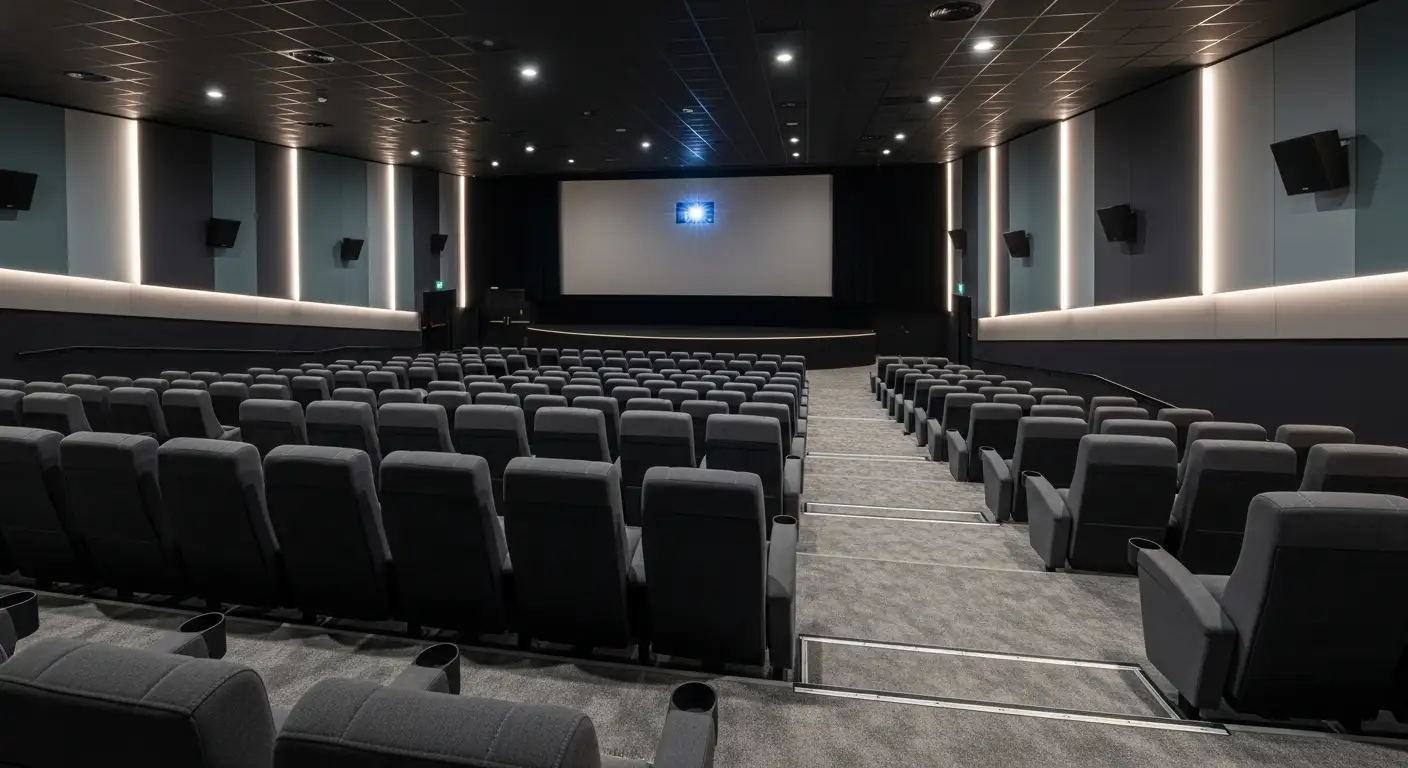PTSD vs. Autism
Unraveling Complex Intersections in Mental and Neurodevelopmental Health
PTSD and Autism Spectrum Disorder (ASD) are distinct conditions with unique features; however, their symptoms often overlap, complicating diagnosis and treatment. This article explores their relationship, clinical presentations, challenges in differentiation, and tailored approaches to support affected individuals.
Understanding Autism Spectrum Disorder (ASD)

What is autism spectrum disorder?
Autism Spectrum Disorder (ASD) is a neurodevelopmental condition that affects how a person interprets the world, communicates, and interacts with others. It is characterized by persistent challenges in social communication and interaction, along with restrictive interests and repetitive behaviors. These traits usually emerge early in childhood and are rooted in genetic and neurobiological differences.
Autism is a spectrum, meaning it varies considerably among individuals in severity and the specific traits expressed. Approximately 1 in 68 children in the United States is diagnosed with autism, making it a relatively common condition.
Understanding autism as a lifelong difference is crucial. It is not something that can be
Defining PTSD and Its Features

What is PTSD and how does it manifest?
Post-Traumatic Stress Disorder (PTSD) is a mental health condition that can develop after experiencing or witnessing a traumatic event such as abuse, loss, violence, or serious accidents. People with PTSD often experience intrusive symptoms like nightmares and flashbacks that seem as vivid as the original trauma. They may also suffer from hypervigilance, feeling constantly on edge, and avoidance behaviors, steering clear of places or activities that remind them of the trauma.
Emotional distress, feelings of numbness, and dissociation—feeling detached from reality—are common in PTSD. These symptoms can significantly impact daily life and functioning, sometimes leading to depression and anxiety as well. Importantly, PTSD is treatable. Therapies like trauma-focused cognitive-behavioral therapy (CBT), Eye Movement Desensitization and Reprocessing (EMDR), and medications have proven effective in helping individuals recover.
Symptom onset and triggers
Symptoms of PTSD can appear weeks or even months after the traumatic event, but sometimes they show up immediately. Triggers are cues that remind one of the trauma, such as a loud noise or a particular smell, which can cause a sudden resurgence of distressing symptoms. For autistic individuals, sensory sensitivities or specific routines may also act as triggers, complicating diagnosis and treatment.
Diagnostic criteria for PTSD and C-PTSD
PTSD diagnosis is based on criteria from the DSM-5, including exposure to trauma, intrusive symptoms, avoidance, negative alterations in mood and cognition, and alterations in arousal and reactivity lasting longer than a month. Complex PTSD (C-PTSD), recognized by the ICD-11, involves similar symptoms but also features persistent emotional dysregulation, negative self-concept, and difficulties in relationships due to prolonged trauma exposure.
Treatment options and prognosis
Treatment options for PTSD involve trauma-focused psychotherapy like CBT and EMDR, which help process traumatic memories. Medication such as antidepressants can also be beneficial. The prognosis is generally positive with appropriate treatment, though some individuals may experience prolonged recovery depending on trauma severity and comorbid conditions.
Autistic individuals with PTSD often require adapted approaches, with therapies tailored to their sensory and emotional needs. Stabilization activities, grounding techniques, and a supportive environment are essential components of recovery.
| Aspect | Description | Additional Notes |
|---|---|---|
| Symptoms | Intrusions, avoidance, hyperarousal | Often chronic if untreated |
| Triggers | Reminders of trauma, sensory inputs | In autistic individuals, sensory sensitivities can be triggers |
| Diagnostic tools | DSM-5 criteria, clinical interviews | ICD-11 includes C-PTSD criteria |
| Treatments | Trauma-focused CBT, EMDR, medication | Adaptations may be needed for neurodiverse populations |
| Prognosis | Usually good with treatment | Early intervention improves outcomes |
Overlap of PTSD and Autism Symptoms
 Autism spectrum disorder (ASD) and post-traumatic stress disorder (PTSD) often present with similar behavioral and emotional features, which can pose challenges for accurate diagnosis and treatment. Common shared symptoms include sensory sensitivities; individuals with both conditions might experience heightened reactions to sound, light, or touch, which can lead to distress or overwhelm.
Autism spectrum disorder (ASD) and post-traumatic stress disorder (PTSD) often present with similar behavioral and emotional features, which can pose challenges for accurate diagnosis and treatment. Common shared symptoms include sensory sensitivities; individuals with both conditions might experience heightened reactions to sound, light, or touch, which can lead to distress or overwhelm.
In addition, difficulties in social interaction are notable in both disorders. Autistic individuals often struggle with understanding social cues, while those with PTSD may withdraw from social situations due to fear or distrust stemming from traumatic experiences.
Repetitive behaviors or stimming—such as hand-flapping or rocking—are characteristic of autism, but similar repetitive or ritualistic behaviors can also occur in PTSD as part of attempts to manage anxiety or create a sense of safety.
Emotional regulation issues are common in both conditions. Autistic individuals might have difficulty managing intense emotions, and PTSD can cause emotional dysregulation, leading to intense anger, anxiety, or sadness especially trigger-related. Avoidance behaviors, like steering clear of certain places or situations, and hypervigilance, or a state of heightened alertness, are also shared features.
These overlapping symptoms complicate clinical assessments, requiring professionals to carefully analyze developmental history and trauma exposure. Differentiating autism from trauma-related reactions involves understanding whether behaviors are longstanding or linked to recent traumatic events. Using structured assessments and thorough interviews helps clinicians determine the underlying causes.
Understanding these commonalities is essential for tailoring interventions that address each individual’s unique needs, ensuring that both autism-related behaviors and trauma symptoms are appropriately managed.
Impact of Trauma on Individuals with Autism

How does trauma affect individuals with autism?
Trauma can profoundly impact autistic individuals, often worsening their existing challenges. It tends to heighten anxiety, cause emotional dysregulation, and increase behavioral issues. Many autistics face adverse experiences like bullying, social rejection, and abuse more frequently than their neurotypical peers. These experiences can trigger trauma symptoms, including hypervigilance, avoidance, and emotional distress. Additionally, trauma can alter brain functioning, impairing emotional regulation and social understanding further.
Research shows that a significant proportion—up to 60%—of autistic people report probable PTSD at some point in their lives. This overlap complicates diagnosis since some trauma responses mimic autism symptoms, such as social withdrawal or repetitive behaviors. Trauma may lead to regression in communication skills, increased sensory sensitivities, or avoidance behaviors, which can be misinterpreted or overlooked.
Are autistic individuals more vulnerable to traumatic events?
Yes, autistic individuals are more vulnerable to experiencing traumatic events. Factors such as heightened sensory sensitivities, difficulties in communication, and social vulnerabilities increase their risk of adverse experiences. For instance, they are more likely to encounter social exclusion, bullying, and physical or emotional abuse.
The neurobiological profile of autism, characterized by less flexible nervous systems and sensory differences, makes them more reactive to stress and trauma. Studies indicate that autistic populations are at a higher risk of developing PTSD, with some research reporting rates as high as 40-45%, compared to about 4-5% in the general population. This heightened susceptibility underscores the importance of trauma-informed care and tailored interventions to support their mental health.
Neurobiological vulnerability and social consequences
Autistic neurobiology, including hyper- or hypo-sensitivities and challenges with emotional regulation, makes trauma responses more intense and harder to manage. The brain’s response to trauma can further impair social cognition skills, such as recognizing facial expressions or understanding social cues, which are already areas of difficulty in autism.
Social withdrawal and avoidance behaviors are common, especially following traumatic incidents. These behaviors may resemble the intrinsic social challenges of autism, creating diagnostic challenges. Furthermore, trauma may exacerbate existing sensory sensitivities, leading to overload and heightened stress. Recognizing these overlapping symptoms emphasizes the need for comprehensive assessments and personalized treatment plans.
| Aspect | Description | Additional Notes |
|---|---|---|
| Susceptibility to trauma | Higher risk due to sensory sensitivities and social vulnerabilities | Elevated PTSD rates among autistic individuals |
| Symptom overlap | Similarities in avoidance, sensory overload, and emotional dysregulation | Can hinder accurate diagnosis |
| Brain response | Trauma impacts brain regions involved in processing emotions and social cues | Brain changes may be detected through neuroimaging |
| Social and emotional effects | Increased withdrawal, reactivity, and sensory chaos | May worsen pre-existing autism challenges |
In conclusion, trauma significantly impacts individuals with autism, intensifying core challenges and complicating social and emotional functioning. Recognizing their heightened vulnerability calls for trauma-sensitive approaches and individualized support strategies.
Can Trauma Mimic Autism Symptoms in Adults?
 Trauma can lead to symptoms that resemble autism, such as social withdrawal, emotional dysregulation, sensory sensitivities, and repetitive behaviors. These reactions often occur after experiencing stressful or traumatic events and can be mistaken for core autism traits.
Trauma can lead to symptoms that resemble autism, such as social withdrawal, emotional dysregulation, sensory sensitivities, and repetitive behaviors. These reactions often occur after experiencing stressful or traumatic events and can be mistaken for core autism traits.
However, it is important to recognize that autism is a neurodevelopmental condition present from early childhood, rooted in genetic and neurological differences. Traits like social communication difficulties or sensory sensitivities in autism are typically consistent across various environments and observed early in life.
In contrast, trauma-induced symptoms are generally situational and fluctuate over time, often linked to specific triggers related to past traumatic events. These responses may include increased hypervigilance, avoidance behaviors, or emotional outbursts that are not consistent with the persistent nature of autism.
Differentiating between trauma responses and autism requires a thorough assessment. Clinicians consider the individual’s developmental history, including milestones and early behaviors, and examine whether symptoms appeared following trauma or are longstanding. Detailed history-taking, observation across different settings, and specialized assessments help distinguish temporary trauma reactions from enduring autism traits.
Accurate diagnosis is crucial for effective treatment. While trauma-related symptoms may improve with trauma-focused therapies, autism support often involves behavioral and developmental interventions that address core neurodevelopmental differences. Understanding the difference ensures individuals receive appropriate care tailored to their needs.
Clinical Evaluation and Differential Diagnosis
What are key considerations when diagnosing PTSD versus autism?
Diagnosing PTSD and autism involves a thorough review of developmental history, symptom onset, and current behaviors. Autism traits are usually evident from early childhood, characterized by persistent social communication challenges, repetitive behaviors, and sensory sensitivities. These signs are generally lifelong and consistent across settings.
In contrast, PTSD symptoms typically develop after exposure to traumatic events and can fluctuate over time. Recognizing whether behaviors stem from long-standing developmental patterns or trauma-related responses is critical.
Standardized assessment tools enhance diagnostic accuracy. For autism, instruments like the Autism Diagnostic Observation Schedule (ADOS) provide structured observation of social and communicative behaviors. For PTSD, detailed trauma histories and symptom questionnaires are used.
Clinicians must integrate all information—developmental history, symptom timeline, and observational data—guided by clinical judgment to differentiate between the two conditions effectively.
Treatment Approaches for PTSD and Autism
How are treatments different for PTSD and autism?
PTSD treatments mainly focus on addressing trauma symptoms through trauma-focused therapies such as cognitive-behavioral therapy (CBT), Eye Movement Desensitization and Reprocessing (EMDR), and sometimes medications to reduce anxiety or depressive symptoms. These therapies aim to help individuals process traumatic memories, reduce flashbacks, and improve emotional regulation.
Autism interventions, on the other hand, target core features like communication difficulties, sensory sensitivities, and social skills. Typical strategies include speech therapy to enhance communication, occupational therapy for sensory and motor regulation, and behavioral approaches like Applied Behavior Analysis (ABA) to build functional skills.
When these conditions co-occur, therapy approaches need tailoring. They should accommodate autism-specific sensitivities and emotional challenges. For example, sessions might be longer or more frequent, and incorporate interests that motivate the individual, thus making therapy more engaging and supportive.
Can treatment approaches be combined for PTSD and autism?
Yes, combining strategies is often necessary for individuals with both autism and PTSD. An integrated plan might start with stabilization activities—such as mindfulness, sensory soothing, and safe environmental modifications—to build trust and emotional safety.
Gradual exposure therapies can then be employed carefully, ensuring sensory sensitivities are respected. This may mean adapting exposure exercises to suit individual tolerance levels, and pacing therapy to prevent overwhelm.
Incorporating interests and strengths into therapy sessions helps maintain engagement and foster trust. Longer or more frequent sessions may be needed, along with a focus on developing emotional regulation skills suitable for autistic individuals.
Overall, personalized, holistic approaches that address both trauma and autistic traits tend to be most effective. Professionals aim to create a safe, predictable environment that facilitates healing and skill development.
Barriers and Opportunities in Therapy and Support
What are common barriers for autistic individuals receiving trauma treatment?
Autistic individuals often face several obstacles when accessing trauma support. A major barrier is the limited training among healthcare professionals regarding autism-specific needs, which can result in misunderstandings or inappropriate treatment approaches. Additionally, there are systemic gaps in availability and accessibility of specialized trauma therapies designed to suit autistic sensory and communication profiles.
Sensory sensitivities, such as sensitivities to light, sound, or touch, can make traditional therapy settings overwhelming. Communication difficulties may hinder expression of complex emotional experiences, leading to misdiagnosis or underdiagnosis of trauma. These factors contribute to a significant problem: many autistic individuals do not receive the necessary trauma treatment, leaving issues unaddressed for years.
What opportunities exist for improving trauma support in autism?
Addressing these challenges requires targeted efforts to enhance trauma care for autistic populations. Developing assessment tools tailored to autism, which effectively identify trauma symptoms without being confounded by autistic traits, is crucial. Tools such as the Childhood Adversity and Social Stress Questionnaire (CASSQ) are examples of progress in this area.
Training clinicians in autism-sensitive approaches can also make a meaningful difference. Education should cover sensory accommodations, communication strategies, and neurodiversity awareness to foster a more inclusive and effective therapeutic environment.
Moreover, integrating supportive activities like mindfulness, sensory regulation interventions, and creative therapies (e.g., music or art therapy) can enhance emotional regulation and engagement. Increasing research and awareness are vital to creating accessible, individualized interventions that meet the unique needs of autistic individuals dealing with trauma.
Expanding these opportunities can significantly improve mental health outcomes, promote healing, and facilitate better quality of life for autistic people affected by trauma.
Neurobiological and Brain Development Perspectives
How does trauma affect brain structures involved in emotion and social cognition?
Trauma occurring during critical developmental periods can significantly change the architecture of key brain regions like the amygdala, hippocampus, and prefrontal cortex. These areas are essential for processing fear, regulating emotions, and understanding social cues.
Post-trauma, the amygdala often becomes hyperactive, heightening emotional responses and fear sensitivity. The hippocampus, which is vital for memory formation, may shrink or function less effectively, making it harder to distinguish between past and present threats. The prefrontal cortex, responsible for decision-making and impulse control, can exhibit reduced activity, impairing emotional regulation and social interactions.
In autistic individuals, these brain regions already show structural and functional differences from early childhood. For example, atypical connectivity patterns and sensory processing differences influence how trauma impacts them, often leading to more profound emotional and social difficulties after traumatic events.
What are the neurobiological differences in autism that affect trauma response?
Autistic brains tend to display neural connectivity variations, including either overconnectivity or underconnectivity between different regions. This affects how sensory information is processed, often leading to heightened sensitivities or hypo-responsiveness. Additionally, these differences result in a less flexible nervous system, which can make autistic individuals more reactive to stress and trauma.
This neurobiological profile can heighten vulnerability to trauma-related responses, such as emotional dysregulation, dissociation, or increased risk of victimization. The less adaptable neural framework might also slow recovery from traumatic stress and complicate traditional treatment approaches.
Understanding these brain-based differences is essential for developing effective, tailored interventions for autistic individuals facing trauma, emphasizing the importance of neurobiologically informed support strategies.
| Brain Region | Role in Emotion and Social Cognition | Impact of Trauma & Autism |
|---|---|---|
| Amygdala | Fear processing, emotional reactions | Hyperactivity post-trauma; heightened reactivity in autism |
| Hippocampus | Memory, distinguishing past from present | Structural changes affecting memory integration |
| Prefrontal Cortex | Regulating impulses, decision-making | Reduced activity impacting emotional control |
Research into the neurobiological basis of PTSD and autism (search: "Neurobiological basis of PTSD and autism") continues to shed light on their overlapping and distinct features, guiding better diagnosis and personalized treatment plans.
Moving Forward with Awareness and Understanding
Understanding the complex relationship between PTSD and autism is crucial for accurate diagnosis, effective intervention, and compassionate support. Recognizing overlapping symptoms, addressing unique needs, and advancing research will help clinicians and caregivers better support individuals navigating both conditions. Tailored approaches and increased awareness can foster resilience, recovery, and inclusion for affected individuals.
References
- PTSD and Autism - Neurodivergent Insights
- Autism and PTSD: Overlap, link, and treatment - Medical News Today
- Distinguishing Trauma* from Autism - Attwood & Garnett Events
- Can childhood PTSD be mistaken for autism?
- Post-traumatic stress disorder in autistic people
- Autism, Adverse Events, and Trauma - NCBI
- Is it Autism, Trauma, or Both? Part One: Understanding the Overlap
Other articles
Recent articles

Cultural Perspectives On Autism Around The World

Autism And Creative Arts As Emotional Expression Tools

Developing Emotional Regulation Skills In Autistic Teens

Best Sensory-Friendly Lighting Solutions For Autism

Cognitive Behavioral Therapy Adaptations For Autism

Best Practices For Autism-Friendly Movie Screenings

Autism And Eating Challenges Beyond Picky Eating

Best Practices For Autism-Friendly Public Transport Design

Best Ways To Foster Collaboration Between Parents And Schools For Autism Support

Supporting Autistic Children During Transitions Between Activities

The Role Of Teachers In Fostering Autism Peer Acceptance

Using Art Therapy To Support Children With Autism

Autism And Strategies For Addressing Sensory Defensiveness

Autism And The Benefits Of Structured Leisure Activities

How To Support Autistic Students During Exam Season

Autism And Goal Setting For Personal Growth

How To Use Gamification In Autism Learning Programs

How Schools Can Reduce Bullying Of Autistic Students

Early Intervention Strategies For Autism Spectrum Disorder

The Role Of Therapists In Autism Life Skills Coaching

How To Support Autistic Individuals In Crisis Situations

Autism And Self-Care Routines For Stress Management

Understanding Echolalia And Its Role In Autism Communication

Autism And Fine Arts Education Benefits

The Impact Of Multisensory Learning On Autism Education

How Family Counseling Supports Autism Household Dynamics

Best Practices For Inclusive Playgrounds For Autism

Best Practices For Autism-Friendly Shopping Centers

How Autism Affects Fine Motor Skill Development

Best Ways To Introduce Sensory Activities Into Daily Routines

How Sports Teams Can Be Inclusive Of Autistic Players

Autism And Strategies For Building Workplace Resilience

Autism And The Impact Of Hormonal Changes During Puberty

How To Support Autistic Students In Foreign Language Classes

Best Ways To Teach Money Skills To Teens With Autism

Supporting Siblings Of Children With Autism

Autism And Co-Occurring Gastrointestinal Disorders

The Role Of Art Projects In Autism Sensory Integration

How Schools Can Incorporate Sensory Break Spaces

Best Practices For Autism Sensory Regulation At School

Autism And Strategies For Teaching Organizational Skills

Understanding The Relationship Between Autism And Anxiety Disorders

Autism And Life Planning For Long-Term Care

Exploring Visual Supports In Autism Education

Ways To Encourage Social Interaction In Children With Autism

The Connection Between Autism And Dyscalculia

The Role Of Occupational Therapy In Transition Planning For Autism

The Role Of Physical Therapists In Autism Motor Skills Support

How To Teach Decision-Making Skills To Autistic Young Adults

The Connection Between Autism And Epilepsy

Best Practices For Transitioning Autistic Children Into New Schools

Autism And Time Management Challenges In Adulthood

The Role Of Visual Arts In Autism Communication Development

How To Address Tactile Defensiveness In Autism

Best Practices For Telehealth Autism Therapy

How To Help Autistic Children Develop Friendship Skills

How Schools Can Support Autistic Students In Career Prep

Best Strategies For Autism-Friendly Event Planning

Understanding Noncontingent Reinforcement In Autism Behavior Plans

How Drama Therapy Benefits Autistic Individuals

Best Practices For Autism-Friendly Fitness And Recreation Centers

Best Ways To Promote Healthy Social Media Use For Autistic Teens

How To Help Autistic Children Cope With Public Speaking

Autism And Strategies For Managing Unexpected Changes

Best Podcasts About Autism For Parents And Educators

Autism And The Impact Of Seasonal Changes On Behavior

The Role Of Diet In Managing Co-Occurring Conditions With Autism

Sleep Challenges In Autism And Practical Solutions

Best Ways To Build Daily Routines For Autistic Children

Best Practices For Supporting Autistic Entrepreneurs

Autism And Strategies For Navigating Large Social Gatherings

Adaptive Sports And Recreational Activities For People With Autism

Autism And The Benefits Of Story-Based Learning Activities

Understanding The Role Of Play In Autism Development

Autism And The Impact Of Environmental Noise On Learning

How To Create Autism-Friendly Community Spaces

Autism And Chronic Health Conditions: What To Know

The Role Of Care Managers In Autism Life Planning

How To Teach Social Boundaries To Autistic Children

How Autistic Individuals Experience Empathy Differently

How To Support Autistic Employees In Remote Work Settings

Autism And The Relationship Between Motor Skills And Learning

How To Create Community Resource Guides For Autism Families

How To Teach Daily Living Skills To Autistic Teens

Autism And The Impact Of Mind-Body Practices On Stress Reduction

Autism And The Benefits Of Outdoor Group Activities

How To Create Autism-Friendly Sensory Paths In Schools

Best Practices For Autism-Friendly Park And Recreation Areas

Autism And Strategies For Reducing School Refusal

Supporting Autistic Individuals In Public Speaking

The Role Of Diet In Managing Autism Symptoms

The Benefits Of Gardening Clubs For Autism Social Development

How To Prepare Autistic Children For Dental Visits

Autism And Employment: Career Paths That Work

Best Practices For Autism-Friendly Hotels And Lodging

The Impact Of Screen Time On Autism Development

Autism Screening Tools For Early Childhood

The Role Of Physical Exercise In Autism Therapy

Best Strategies For Supporting Autistic College Students

The Role Of Technology In Autism Early Detection
We’re All About You, Your Family, and Your Child

